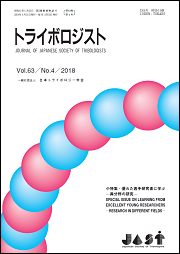Current issue
Special Issue on Recent Research and Future Prospects of Fullerene as Lubricant Additives
Displaying 1-14 of 14 articles from this issue
- |<
- <
- 1
- >
- >|
Announcement
-
2024 Volume 69 Issue 5 Pages K5
Published: May 15, 2024
Released on J-STAGE: May 15, 2024
Download PDF (1750K)
Contents
-
2024 Volume 69 Issue 5 Pages M5
Published: May 15, 2024
Released on J-STAGE: May 15, 2024
Download PDF (241K)
Serial Messages to Tribologists
-
2024 Volume 69 Issue 5 Pages 329
Published: May 15, 2024
Released on J-STAGE: May 15, 2024
Download PDF (461K)
Special Issue on Recent Research and Future Prospects of Fullerene as Lubricant Additives
-
2024 Volume 69 Issue 5 Pages 330
Published: May 15, 2024
Released on J-STAGE: May 15, 2024
Download PDF (168K)
Explanation
-
2024 Volume 69 Issue 5 Pages 331-337
Published: May 15, 2024
Released on J-STAGE: May 15, 2024
Download PDF (900K) -
2024 Volume 69 Issue 5 Pages 338-343
Published: May 15, 2024
Released on J-STAGE: May 15, 2024
Download PDF (1900K) -
2024 Volume 69 Issue 5 Pages 344-349
Published: May 15, 2024
Released on J-STAGE: May 15, 2024
Download PDF (933K) -
2024 Volume 69 Issue 5 Pages 350-357
Published: May 15, 2024
Released on J-STAGE: May 15, 2024
Download PDF (1414K) -
2024 Volume 69 Issue 5 Pages 358-363
Published: May 15, 2024
Released on J-STAGE: May 15, 2024
Download PDF (1633K) -
Applicability of Fullerene as Lubricant Additives for Performance Improvement of Timing Chain System2024 Volume 69 Issue 5 Pages 364-370
Published: May 15, 2024
Released on J-STAGE: May 15, 2024
Download PDF (2893K)
Up-to-date News Tribo-Episode -Tribologist Received Ph.D.-
-
2024 Volume 69 Issue 5 Pages 371-372
Published: May 15, 2024
Released on J-STAGE: May 15, 2024
Download PDF (4678K)
Original Contribution on Science
-
2024 Volume 69 Issue 5 Pages 373-384
Published: May 15, 2024
Released on J-STAGE: May 15, 2024
Advance online publication: February 15, 2024Download PDF (2284K) -
2024 Volume 69 Issue 5 Pages 385-395
Published: May 15, 2024
Released on J-STAGE: May 15, 2024
Advance online publication: January 15, 2024Download PDF (2302K)
Report of the Society
-
2024 Volume 69 Issue 5 Pages 396-399
Published: May 15, 2024
Released on J-STAGE: May 15, 2024
Download PDF (1404K)
- |<
- <
- 1
- >
- >|
